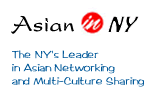northern Asia. They remained little more than a loose confederation of rival clans until the late 12th century, when a 20-year-old Mongol named Temujin emerged and managed to unite most of the Mongol tribes. In 1189 he was given the honorary name of Genghis Khan, meaning ‘universal king’. The Genghis Khan imprinted in the memory of the west bears little relation to the Chinggis Khaan revered by Mongolians. Not only the spelling is different: to Europeans, the name epitomises merciless warmongering; to the Mongolians, it embodies strength, unity, law and order. Genghis set up his capital in present-day Kharkhorin, and launched his vital cavalry against China and Russia. By the time of his death in 1227, the Mongol empire extended from Beijing to the Caspian Sea.
Genghis’ grandson, Kublai Khan (circa 1216-94), completed the subjugation of China, ending the Song dynasty (960-1279) and becoming emperor of China’s Yuan dynasty (1271-1368). Kublai soon realised, though, that the Mongol empire had reached the limits of its expansion. Instead of looking for more wars to fight, he concentrated on keeping the vast empire together. This was the height of the Mongols’ glory: the empire stretched from Korea to Hungary and as far south as Vietnam, making it the largest empire the world has ever known.
After Kublai Khan’s death in 1294, the Mongols became increasingly dependent on the people they ruled. They were deeply resented as an elite, privileged class exempt from taxation, and the empire became ridden with factions vying for power. The Mongols were expelled from Beijing by the first emperor of the Ming dynasty in the mid 14th century. The collapse of the Yuan dynasty caused over 60,000 Mongols to return to Mongolia. Their unity dissolved and frequent clan warfare and a long period of decline followed. Manchu rule over China was reasonably benign until around 1800; thereafter the Qing emperors became increasingly corrupt and despotic.
Modern History
In 1911 China’s Qing dynasty crumbled. The Mongols quickly saw their opportunity and independence from China was declared on 1 December 1911, with a theocratic government under the leadership of the 8th Jebtzun Damba (Living Buddha). On 25 May 1915, the Treaty of Kyakhta, which granted Mongolia limited autonomy, was signed by Mongolia, China and Russia.
The Russian Revolution of 1917 shocked Mongolia’s aristocracy. Taking advantage of Russia’s weakness, a Chinese warlord sent his troops into Mongolia in 1919 and occupied the capital. In early 1921, retreating White Russian anticommunist troops entered Mongolia and expelled the Chinese. The brutality of both the Chinese and Russian forces inflamed the Mongolians’ desire for independence. As the Russian Bolsheviks were steadily advancing against the White Russian forces in Siberia, Mongolian nationalists asked the Bolsheviks for help. Together they recaptured the capiral Urga in July 1921. The country’s Buddhist leader was retained as a figurehead and the newly formed Mongolian People’s Party (the first political party in the country’s history, and the only one for the next 69 years) took over the government. On 26 November 1924, the Mongolian People’s Republic (MPR) was declared and Mongolia became the world’s second communist country. Urga was renamed Ulaanbaatar (Red Hero) in celebration of the communist triumph.
Mongolian communism remained fairly independent of Moscow until Stalin gained absolute power in the late 1920s. The Stalinist purges that followed swept Mongolia into a totalitarian nightmare, with the government’s campaign against religion being particularly ruthless. In 1937 a reign of terror was launched against the monasteries, and thousands of monks were executed. It’s believed that by 1939 some 27,000 people had been executed, three per cent of Mongolia’s population at the time.





